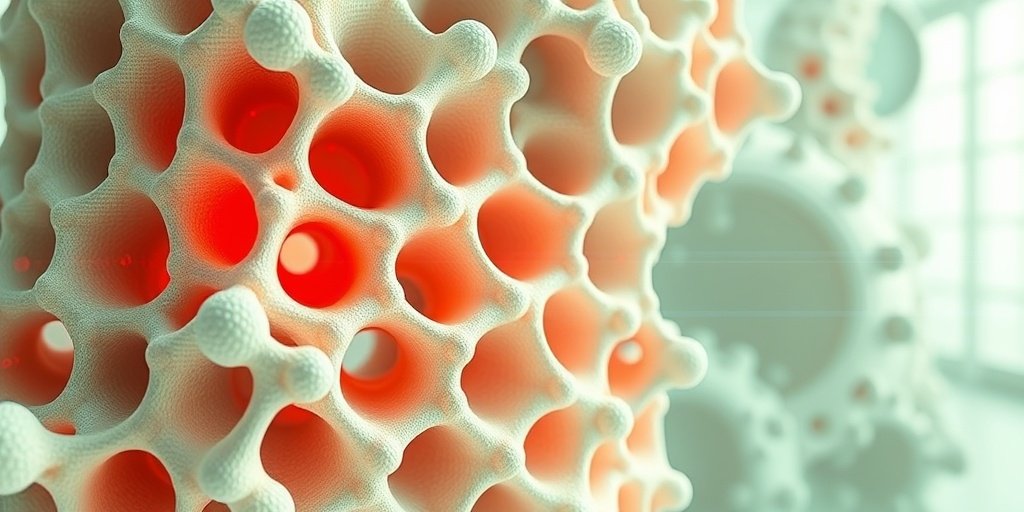⚡ Quick Summary
This study introduces a novel data-driven deep learning computer vision (DLCV) method to visualize the nexus between porous architecture and reactive transport in heterogeneous catalysis. By leveraging Conditional Generative Adversarial Network and feature representation transfer learning, researchers successfully inferred the 3D local reaction rate from 2D images of anisotropic porous catalysts.
🔍 Key Details
- 📊 Methodology: Deep learning computer vision (DLCV) using cGAN-FRT
- 🔬 Focus: Nexus of porous architecture and reactive transport in heterogeneous catalysis
- 🌐 Application: Heterogeneous electrocatalysis
- ⚙️ Key Factors Identified: Pore throat, curved flow channel, and their combined structures
🔑 Key Takeaways
- 🔍 New Approach: The study addresses limitations of conventional text-based methods in identifying key reaction regions.
- 💡 AI Integration: Utilizes artificial intelligence to visualize complex relationships in porous media.
- 📈 Performance: Rapid and accurate prediction of reaction rates demonstrated.
- 🌍 Generalizability: Method validated across various heterogeneous electrocatalysis scenarios.
- 🔑 Insights: Identified dominant factors affecting nonlinear variation in reactive transport.
- ⚡ Breakthrough Technology: Conditional Generative Adversarial Network (cGAN) enhances feature representation.
- 🔗 Study Reference: Published in Nature Communications, 2025.

📚 Background
Heterogeneous catalysis plays a crucial role in both natural and engineered systems, where reactive transport in porous media is a fundamental process. Understanding the relationship between porous architecture and reactive transport is essential for optimizing catalytic processes. Traditional methods often rely on quantitative structural features, which can overlook critical reaction dynamics, particularly in anisotropic architectures.
🗒️ Study
The researchers aimed to bridge the gap between porous architecture and reactive transport by employing a data-driven approach. They developed a deep learning computer vision (DLCV) method that utilizes Conditional Generative Adversarial Network and feature representation transfer learning (cGAN-FRT) to visualize and predict local reaction rates from 2D images of anisotropic porous catalysts.
📈 Results
The study demonstrated that the 3D local reaction rate could be accurately inferred from 2D lateral images, showcasing the efficiency and generalizability of the proposed method. Key structures such as pore throats and curved flow channels were identified as significant factors influencing the nonlinear variation of reactive transport, providing valuable insights into the physical mechanisms at play.
🌍 Impact and Implications
This research has the potential to revolutionize our understanding of heterogeneous catalysis by integrating artificial intelligence into the analysis of porous media. The ability to visualize and predict reaction dynamics can lead to enhanced catalytic efficiency and optimization in various applications, from energy conversion to environmental remediation. The implications extend beyond academia, potentially influencing industrial practices and technological advancements.
🔮 Conclusion
The study highlights the transformative potential of deep learning in the field of heterogeneous catalysis. By effectively visualizing the nexus between porous architecture and reactive transport, researchers can gain deeper insights into catalytic processes, paving the way for future innovations. The integration of AI in this domain promises to enhance our capabilities in optimizing catalytic systems, ultimately benefiting both scientific research and practical applications.
💬 Your comments
What are your thoughts on the integration of AI in catalysis research? We would love to hear your insights! 💬 Leave your comments below or connect with us on social media:
Visualizing nexus of porous architecture and reactive transport in heterogeneous catalysis by deep learning computer vision and transfer learning.
Abstract
Reactive transport in porous media is the key to heterogeneous catalysis, which is the central process in both natural and engineered systems. Elucidating nexus between porous architecture and reactive transport is of importance, but remains a challenge. Conventional text-based approach relies on quantitative structural features (QSFs; porosity, tortuosity, and connectivity), which fails to identify key reaction regions and predict local reaction rate for anisotropic architecture due to isotropic assumption. To address these issues, this study reports a data-driven deep learning computer vision (DLCV) method for visualizing nexus between porous architecture and reactive transport in heterogeneous catalysis. Here, we show that the 3D local reaction rate can be inferred from 2D lateral images of anisotropic porous catalysts using Conditional Generative Adversarial Network and feature representation transfer learning (cGAN-FRT). Efficiency and generalizability are validated by rapid and accurate prediction of reaction rate for heterogeneous electrocatalysis. Based on feature importance generated by cGAN-FRT, pore throat, curved flow channel, and their combined structures are identified to be the dominant factors that affect nonlinear variation of porous reactive transport, which can be interpreted by physical field synergy. This study realizes visualizing nexus between anisotropic porous architecture and local reactive transport powered by artificial intelligence.
Author: [‘Yu Y’, ‘Wu B’, ‘Wei R’, ‘Ren N’, ‘You S’]
Journal: Nat Commun
Citation: Yu Y, et al. Visualizing nexus of porous architecture and reactive transport in heterogeneous catalysis by deep learning computer vision and transfer learning. Visualizing nexus of porous architecture and reactive transport in heterogeneous catalysis by deep learning computer vision and transfer learning. 2025; 16:8107. doi: 10.1038/s41467-025-63481-4